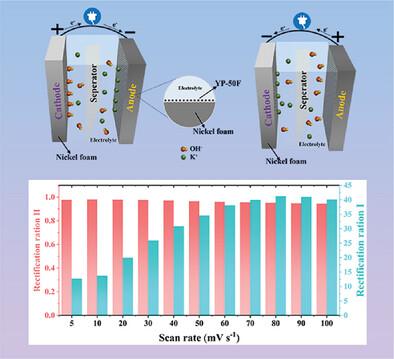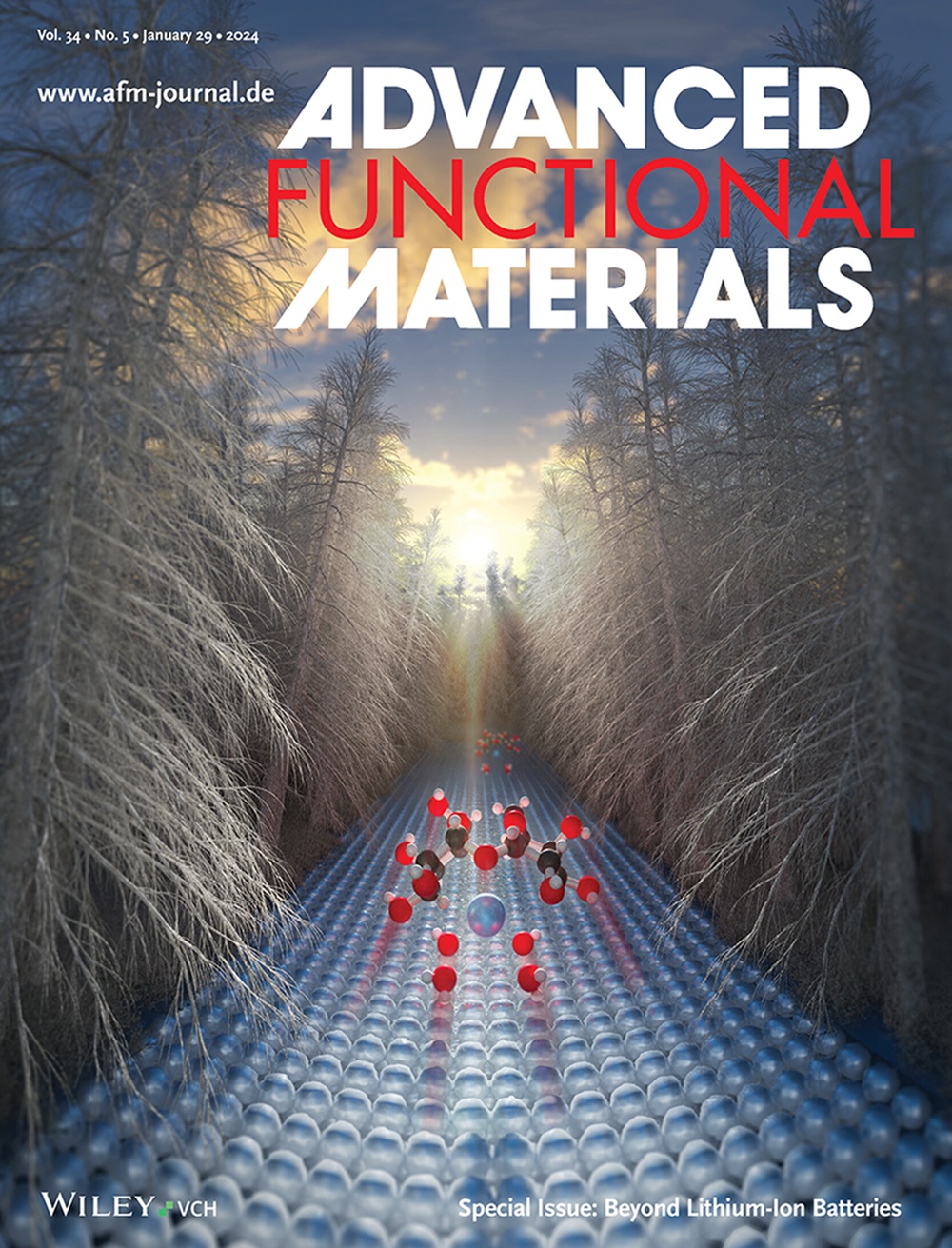Unidirectional Bias Study Based on Nickel Foam Electrochemical Ion Diode
IF 18.5
1区 材料科学
Q1 CHEMISTRY, MULTIDISCIPLINARY
引用次数: 0
Abstract
The proposed supercapacitor diode (CAPode) integrates energy storage and diode characteristics into a single device, enabling high-capacity storage for a specific voltage direction. The CAPode expands the functionality of traditional supercapacitors to new technological applications, including microcircuit rectification, logic gate operations, and signal transmission. Conventional active materials for CAPodes include carbon materials and pseudocapacitor materials, among others, which can be complicated and expensive to synthesize. Here, a new commercial nickel foam-based electrochemical ion diode with ultra-high rectification characteristics (rectification ratio I of 5.41 and rectification ratio II of 0.85 at 200 mV s−1) and good charge storage capacity (49.74 C g−1 at 10 mV s−1) is reported. The key to achieving unidirectional charge storage lies in the sieve-selective oxidative reduction of ions in the alkaline electrolyte by nickel foam, enabling unidirectional OH− transport. The emergence of nickel foam electrochemical ion diodes has opened up a new avenue for realizing the design of high-performance CAPodes due to their lower cost and extremely simple preparation process. Furthermore, the device is demonstrated to perform logical operations such as AND and OR in logic gate circuits, and the results presented may facilitate the practical application of ionic diodes.

求助全文
约1分钟内获得全文
求助全文
来源期刊

Advanced Functional Materials
工程技术-材料科学:综合
CiteScore
29.50
自引率
4.20%
发文量
2086
审稿时长
2.1 months
期刊介绍:
Firmly established as a top-tier materials science journal, Advanced Functional Materials reports breakthrough research in all aspects of materials science, including nanotechnology, chemistry, physics, and biology every week.
Advanced Functional Materials is known for its rapid and fair peer review, quality content, and high impact, making it the first choice of the international materials science community.
 求助内容:
求助内容: 应助结果提醒方式:
应助结果提醒方式:


